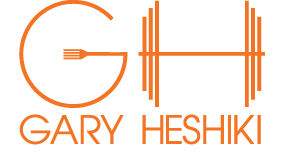I'm speaking here not just from a culinary stand point but also a fitness professional. Now before you pick up that d-a-f (dry as fuck) see every protein strand because its overcooked chicken breast and come at me, hear me out!
The average piece of chicken breast contains:
231 Calories
43g Protein
5g Fat
0g Carb
1.5g Saturated Fat
And dark meat:
287 Calories
38g Protein
14g Fat
0g Carb
3.7g Saturated Fat
If you look at it based on those numbers, you'll notice that you can squeak out a bit more protein out of chicken breast while keeping your saturated fat intake down. The increase in calories from dark meat comes from fat. (Note: If you have a physique based goal and are watching calorie intake, I would go white meat.)
As a cook, I much prefer cooking dark meat for two reasons: I think it tastes better and it's pretty difficult to overcook thighs and drumsticks. But the SATURATED FAT!!!!!!
And saturated fat is BAD right?!
Here's a few points on Saturated Fats and why you should include them in your diet.
- Saturated fat seems to support the enhancement of good cholesterol.
- Fats from palm oil and coconut oil are highly saturated, but not necessarily bad. Palm and coconut also contain medium chain fats, which can support health and optimal body composition.
- Eating saturated fats showed direct improvement in mood and cognition. It's why comfort foods are often very fatty.
The biggest problem with saturated fats seems to be the sources (processed food and oils) combined with refined carbohydrates which as a result causes your health to suffer. If you do choose to consume tropical oils like palm and coconut oil, I would attempt to eat them in their native form. The refinement process often creates hydrogenated fats in an attempt to make the products more shelf stable.
Saturated fat should make up no more than 10% of total calories.
I can't stress that enough....read that sentence above one more time. NO MORE THAN 10%
For someone eating 2000 calories per day, that would be a maximal intake of 200 grams of saturated fat per day.
As a fit pro and common sense weilding human, I know that a bucket of fried chicken or pizza on a weekly basis isn't healthy, but I'm also a lover of good food. And sometimes it comes in the form of a pizza or chicken. I don't deprive myself of these types of foods because of some fad diet.
Always, everything in moderation.






